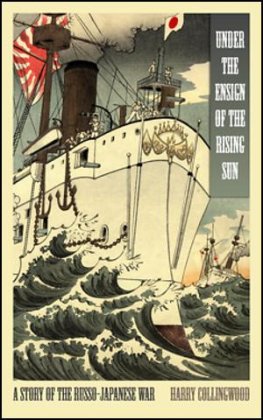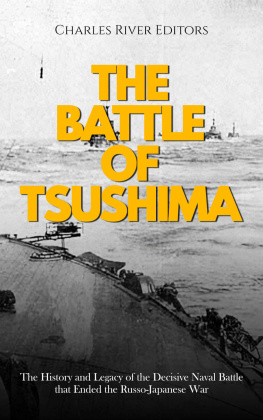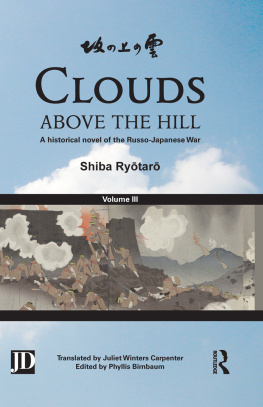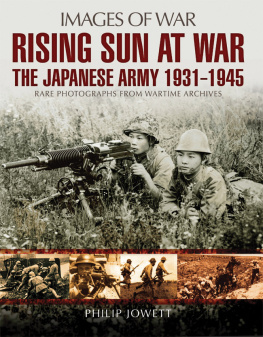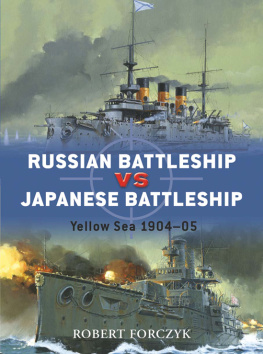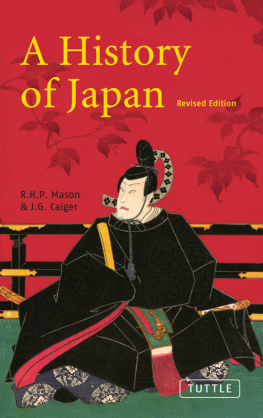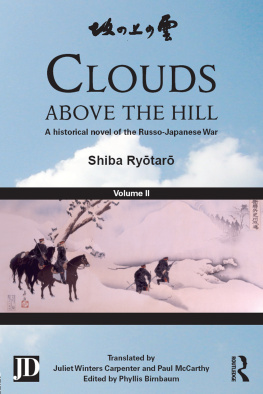CONTENTS
Much of the best history stems from serendipity, said the Economist review of this books first edition in 1988. This refers to the good fortune of my having been a member of the teaching staff at the Army Staff College, Camberley, at a time when the decision was taken to auction off to staff and students the librarys duplicate books and papers. I found some very interesting books I wanted on the 18701 Franco-Prussian War but I also happened to notice volume after volume on a war about which I knew nothing the Russo-Japanese War 19045. Curiosity got the better of me and I bid 50p (75) for each of the volumes on the latter war.
At the time, I was preparing for a two-year assignment to teach at the Australian Army Command and Staff College and packing was well advanced. The Librarian rang and said I had been successful at the book auction. I told him I would be down. Bring your car, you were the sole bidder for the Russo-Japanese War books and you have got the lot, he said. I took them to Australia and in the process of scanning the volumes I was immediately struck by the similarities between what had happened in 19045 in Manchuria and what happened later in Europe 191418.
The book was published by Routledge in 1988. I did not set out to write an academic tome (there are few footnotes) and while I wanted to cover the spectrum from tactics to grand strategies, I also wanted to research the behaviour of the individuals involved the man in uniform and the noncombatant. I was intensely aware of the danger of falling between a number of stools because national power was beginning to shift visibly in a way that it had not done for almost one hundred years. The exponential growth in technology and its effect on modern warfare was waiting to be fully tested at a time when the world was undergoing a tectonic shift in the way wars would be waged. In the early years of the twentieth century there was a discernible movement away from the concept of annihilation to attrition, from short wars to long wars, and from limited war to general war. Nevertheless, I gave myself a brief to tell the story of the war, its politics, its battles and its people. These limited objectives shielded the truth that I was writing about a major war in an area that at the time I was unable to visit.
In the year 2000 I received an invitation from the Chinese authorities to visit Manchuria, a Manchuria affected by one hundred years of population growth and development. Having said that, Port Arthur is a gem of a battlefield waiting to be rediscovered. Going there and deriving the benefit of Fingerspitzengefhl is essential in the writing of history. The Imperial Japanese Navys insistence that General Nogi should concentrate not upon the eastern but upon the northern defences becomes transparently obvious and sensible when one stands on Wantai and finds that the view of the harbour is masked by an intervening feature, yet the view of the whole harbour from 203 Metre Hill is virtually unobstructed.
The original book was undoubtedly due for revision but the problem lies in determining what additional material to include in a one-volume history. There was some room for comment and limited analysis. There were wider questions deserving answers. Why was it, given that the war was witnessed by up to one hundred military observers who saw the pounding artillery, the deep trenchworks, barbed wire and machine guns, these lessons of the land campaign were apparently not learned in preparation for the First World War? Indeed, one of the greatest ironies of this war was that it arguably had greater impact upon the Second rather than the First World War.
The reason why the Japanese beat the Russians in every engagement on land and at sea is a worthy subject for a book by itself rather than through passing reference in concluding thoughts. This, the first defeat of a European power by an Asian power since the thirteenth-century invasion of the Mongols, did ring alarm bells, not only in St Petersburg but as far away as London, Paris, Berlin and Washington and with good reason.
Richard Connaughton
A milestone in the history of Russias aspirations to gain a warm-water port on the Pacific coast occurred on 14 November 1860. The British and French forces had barely vacated Peking a week before when the Chinese ceded to the Tsar the eastern coast of Manchuria from the Amur River to the Korean frontier. This game of Russian bagatelle had taken almost three centuries to conclude. Russian tribes had been drawn initially into the vacuum created by the collapse of the Mongol Empire. Thwarted in the Mediterranean, unable to dominate the Kurds and Turks, squeezed south by the inhospitability of Siberia, they found in the mid-seventeenth century their new lebensraum at Kamchatka. Persistent efforts followed to achieve a dialogue with Japan, still enjoying her self-imposed seclusion, but these were continually rebuffed.
Russias ultimate goal, a secure, permanently ice-free port, still eluded her. Vladivostok, Lord of the East, the new home of the Russian naval headquarters, was closed by ice for three months of the year. Her ability to use the new port effectively depended upon the attitude of Japan whose choker necklace of islands controlled both the Sea of Japan and the egress into the Pacific. To the north, the Straits of La Perouse were overlooked by the northern shore of Hokkaido and the Kurile Islands. Other than the Tsugaru Straits, a narrow passage between Hokkaido and Hondo, the main seaway lay to the south, the bottleneck of the Straits of Korea with the cork provided by the strategically placed Japanese island of Tsushima.
In 1861 the Russians invaded Tsushima. After a brief fight the island was taken by a force of marines. The British, not enjoying the best of relations with Russia, sent a strong naval party to counter this aggression and backed it by vigorous diplomatic protests. As a result, the Russians withdrew, but not before the seeds of anti-Russian loathing were sown in the Japanese mind. Greater cause was yet to come.

Sakhalin had always been regarded by the Japanese as theirs. From early history it had been occupied by the Ainu tribe, but because of its northern aspect and inhospitable weather it was never settled by the people from the south. In new moves, Russia maintained that Sakhalin was hers by right of discovery, by right of occupancy by Siberians, and finally as part of the 1860 cession agreement. None of these claims had much validity but they did lead to a tenuous partition, establishing the Russians in the north and Japanese in the south. Russian pressure grew to such a degree that by 1875 Japan abandoned southern Sakhalin, having to accept the undisputed claim on what she already owned the Kurile Islands. (The Kurile Islands were subsequently to be taken over by the Russians in the closing weeks of the Second World War when Moscow unilaterally renounced its non-aggression treaty with Tokyo.)
Japans position at this stage of history is of interest. The world subordination of non-white tribes by white civilisations was almost complete. The Japanese were not as we know them now. Their interest was particularly defensive and inward-looking. They had no regional aspirations and, other than an incursion into Korea in the sixteenth century, had enjoyed for years their own form of splendid isolation. Although this indolence is not now recognisable, their national characteristic has remained constant, manifested by a fervent patriotism which, when provoked, releases an unstemmable national temper.


